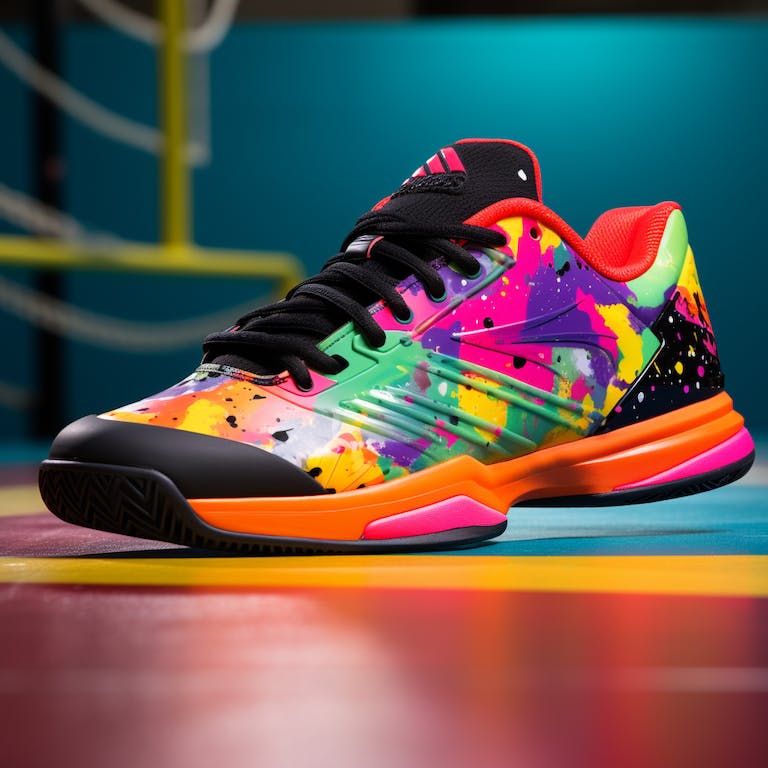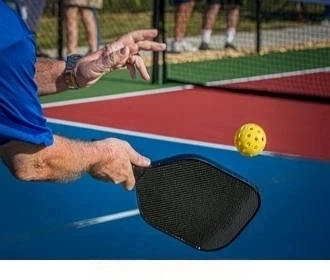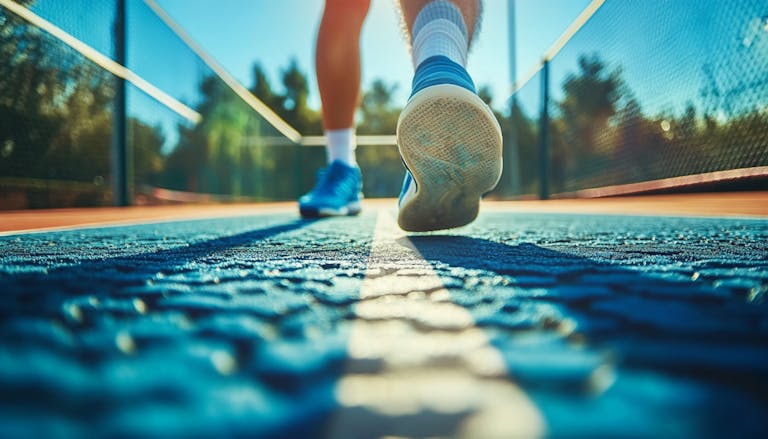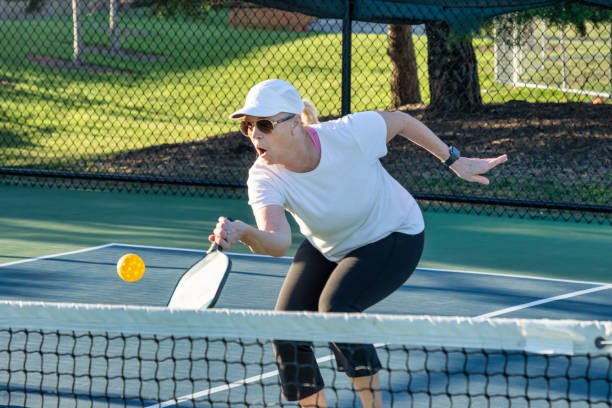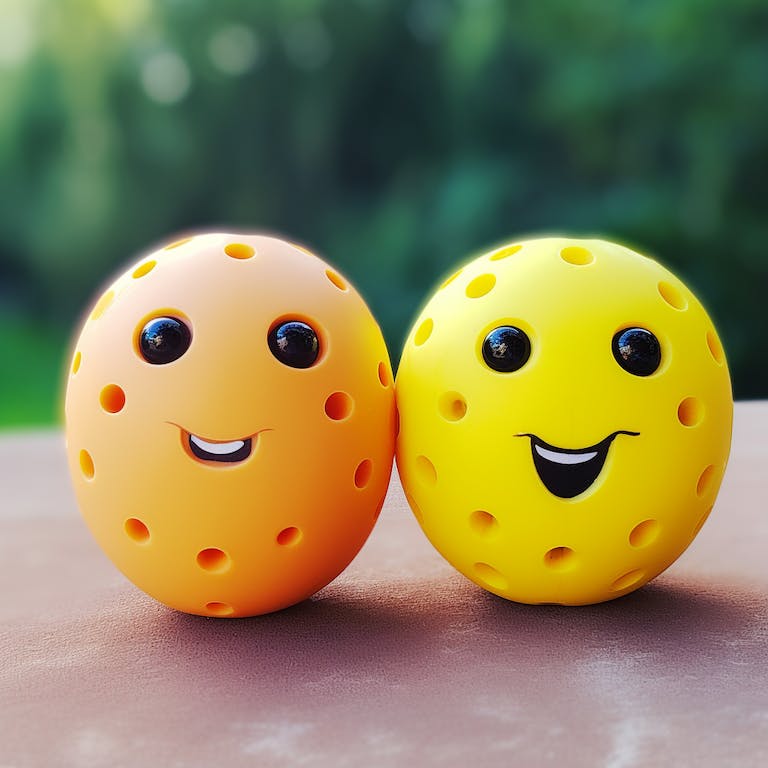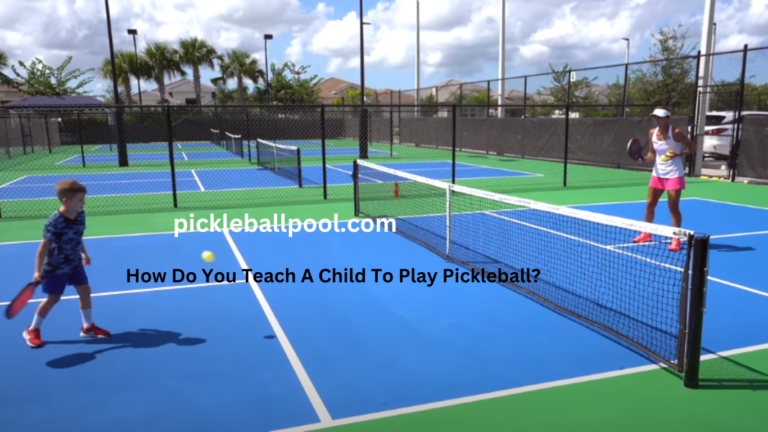Are Pickleball Shoes Good for Walking: A Comprehensive Analysis
Pickleball has seen a surge in popularity over the past few years, attracting players of all ages. With this rise, pickleball shoes have also gained attention for their specialized design. These shoes are crafted to support quick lateral movements and provide great traction on hard courts. But what if you could use them beyond the court? Are pickleball shoes good for walking, or do their unique features cater only to game time?
Imagine stepping out for your daily walk and wondering if these court-ready kicks could make the experience better—or worse. The specific features that make these shoes great for pickleball might seem appealing: snug fit, excellent cushioning, and robust toe caps. However, it’s important to remember that what excels on the court may not translate well onto sidewalks or park trails. In this article, we’ll dive deeper to see if investing in pickleball shoes is beneficial as part of your everyday activewear routine.
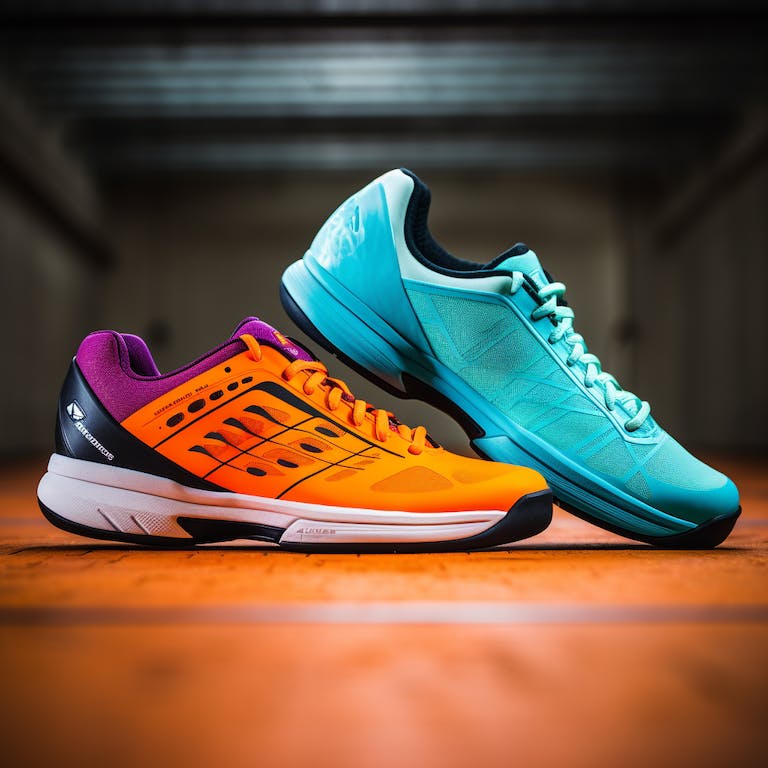
Design Features of Pickleball Shoes
Pickleball shoes are crafted specifically for the dynamic nature of the sport. They boast features that enhance quick, lateral movements on the court. One standout aspect is their superior traction. The outsole is designed to grip hardcourt surfaces effectively, ensuring players can pivot and change direction swiftly without slipping—a crucial element for any sports shoe aiming to prevent injuries during rapid play.
You May like: 7 best women’s pickleball shoes for Wide Feet
This high level of traction might seem beneficial for daily walking; however, it serves a different purpose entirely. For everyday walkers who traverse varied terrains—from smooth pavements to uneven paths—the rigid outsole meant for court traction may not provide the kind of comfort or flexibility needed over long distances. While stability in terms of shoe support is excellent for side-to-side movements, pickleball shoes do not necessarily translate this into extended forward motion comfort suitable for walking.
Despite their prowess in supporting swift sports maneuvers, pickleball shoes lack some design elements that conventional walking shoes prioritize. Walking shoes are typically lighter and are structured with a more flexible sole that permits a natural roll from heel to toe—essential characteristics missing from most pickleball designs. Thus, while they excel in granting court stability and ankle support to cushion sudden starts and stops, they can feel restrictive or cumbersome over prolonged periods of steady-paced walking.
Ultimately, if you wonder “are pickleball shoes good for walking,” it’s important to assess these specific design choices against the activity at hand. While they shine brightly on the court providing safety through grip and structural integrity during intense gameplay, such features might limit comfort and efficiency outside those circumscribed activities. In sum: great at what they’re made for—not quite ideal as a primary walking companion!
Comparison with Traditional Walking Shoes
When comparing pickleball shoes to traditional walking shoes, the structural differences become quite apparent. Pickleball shoes are expertly crafted for multidirectional movement demanded by court sports. This design emphasizes lateral support and stability, ensuring your feet remain steadfast during quick side-to-side maneuvers. In contrast, walking shoes are specifically engineered for the forward motion of taking a stroll. They often feature more flexible soles that encourage rolling through the foot strike, which is ideal for long walks across various terrains.
Examining these footwear options further reveals differences in weight and cushioning. Pickleball shoes tend to be heavier as they require dense outsoles for durability on hard courts, while walking shoes prioritize lightness to minimize fatigue over extended periods of wear. In terms of cushioning, walking shoes usually offer extra padding throughout the entire sole to absorb shock efficiently, making them comfortable companions for lengthy daily ambles.
Deciding which type of shoe provides better support hinges on your specific activity needs and lifestyle preferences. For long periods of walking, traditional walking shoes typically deliver superior comfort due to their specialized build that supports sustained forward motion and continuous impact absorption. While pickleball shoes boast athletic shoe versatility suitable for varied activities beyond just court sports, they may not match up when it comes to maximizing comfort and efficiency during extended walks or hikes typical in everyday footwear usage.
In essence, selecting between pickleball and walking shoes should consider how you intend to use them day-to-day. While each has its benefits within its intended context—pickleball providing an edge on the court and robust short-term wear; walking offering enhanced long-wear cushioning—they suit different aspects of an active lifestyle based on specific demands of movement patterns involved.
You May Like: Can Pickleball Shoes be Used for Other Sports
Support and Stability
While many wonder, “Are pickleball shoes good for walking?” the answer largely hinges on their design features aimed at support and stability. Pickleball shoes are crafted to provide robust side-to-side support, an essential quality when moving quickly across a hardcourt. This lateral support ensures the foot remains stable during sudden movements. Though beneficial for short bursts of activity like pickleball, this might not translate seamlessly to long walks which generally demand forward motion.
Another integral feature of pickleball shoes is their reinforced structure designed to play on varied surfaces without compromising foot health benefits. The strong midsoles lend some degree of shock absorption that could be advantageous if you occasionally traverse different terrains during your walk. However, for the repetitive heel-to-toe movement in extended walks, the moderate cushioning might fall short compared to specialized walking shoes tailored for such consistent motion.
When it comes to walking conditions like uneven sidewalks or slippery paths after rain, pickleball shoes do offer impressive traction due to their court-inspired outsoles. While this provides confidence underfoot and aids durability in walking shoes by minimizing slips, keep in mind their primary function is quick starts and stops on sports courts rather than endurance over lengthy distances. Hence, regular walkers may find themselves sacrificing some comfort for stability when choosing pickleball footwear over traditional options designed specifically for longer strides and comfort across all-day treks.
Traction Capabilities
Pickleball shoes are designed with outsoles that cater specifically to grip on hardcourt surfaces. This design feature provides excellent traction, which is a pivotal aspect of maintaining balance and preventing slips during brisk movements on the court. But when it comes to using these shoes for walking on slippery or uneven surfaces, the same gripping quality can prove beneficial. For instance, imagine navigating through a rain-soaked sidewalk or an unexpectedly muddy trail; pickleball shoes could offer the stability needed to keep you upright compared to traditional walking shoes.
However, it’s important to remember that while crossover sports footwear like pickleball shoes might provide good traction in such situations, they aren’t engineered for hybrid use over extended periods outside their sport-specific context. Traditional walking paths demand a different type of sole durability and arch support than what pickleball shoes usually offer. Their specialized rubber outsole maximizes grip where quick lateral moves are critical but falls short when needing long-lasting comfort that more purpose-designed walking footwear offers.
Good traction not only enhances safety but boosts confidence as well, allowing walkers to step with ease instead of worrying about slipping with every stride. Walking in conditions where sure footing is uncertain can cause anxiousness even for the most seasoned walkers; knowing your soles have got you covered makes all the difference. While exploring various terrain types during your walks, investing in hybrid use sneakers blending features from various sporty innovations might seem enticing but always weigh if it’s truly tailored for extensive walking purposes against just having another fancy pair in your shoe rack.
Comfort Level
When it comes to the comfort of pickleball shoes, they are primarily designed to support quick, agile movements on the court. These shoes often boast midsoles that offer significant cushioning and shock absorption, making them ideal for high-intensity play. This level of padding is appreciated by players during matches as it helps reduce stress on their feet and joints. However, this doesn’t necessarily translate into a comfortable walking experience over longer distances.
Comparing pickleball shoes to traditional walking shoes reveals noticeable differences in terms of comfort during extended use. Walking shoes typically feature designs specifically engineered for prolonged periods of stride-based activities. They often have softer insoles and more flexible outsoles to accommodate the rolling motion of your foot from heel to toe – something that pickleball shoes might lack due to their focus on lateral movement support. Hence, while you might find initial comfort in wearing pickleball shoes for short walks, they are not good for walking if you plan on covering longer distances or spending hours on your feet.
Moreover, the materials used in traditional walking shoes usually include breathable fabrics that help regulate foot temperature during long walks. On the other hand, pickleball shoes may utilize sturdier materials meant for durability on court surfaces which can sometimes lead to overheating when worn outside those specific conditions for too long. Comfort is further impacted by how these different types of footwear distribute weight and pressure – a crucial factor when considering footwear for daily use versus occasional sporting activities.
Ultimately, if you’re debating whether pickleball shoes can enhance your daily walk, it’s important to consider how their design contrasts with what contributes to all-day comfort in walking-specific sneakers. Understanding these differences will better inform your decision should you face a crossroads between wanting versatile athletic gear or footwear purpose-built for sustained comfort and support while walking actively throughout your day.
Durability and Longevity
When it comes to pickleball shoes, their durability is crafted with spirited gameplay in mind. These shoes are designed to withstand the intense lateral movements and pivoting that characterize court sports. Consequently, they often feature robust materials and a sturdy construction meant to handle the rigors of such activities. However, when considering these shoes for daily walks, it’s essential to understand that their longevity might not parallel traditional walking shoes. The specific construction intended for courts means that extended use on varied terrains may lead to accelerated wear and tear.
Pickleball shoes typically incorporate high-quality rubber outsoles and strong uppers, making them seem like a promising option for long-term use by active individuals. Such durable materials provide reliability for those who frequently engage in short bursts of exercise or quick lateral shifts typical in pickleball matches. Yet, continuous walking over diverse surfaces can challenge these components differently compared to their intended design context. Walkers might find that consistent pounding on harder or uneven surfaces could detract from the shoe’s lifespan faster than anticipated.
For active users who thrive on staying mobile through regular walking routines, investing in footwear specifically designed for those activities might be more beneficial both economically and practically. Walking shoes are constructed with repetitive forward-motion in mind; thus, their designs prioritize long-lasting comfort rather than solely lateral stability or rapid directional changes. While pickleball shoes show remarkable endurance within their sport-specific environment, they are likely less able to sustain prolonged exposure as effective walkers’ companions unless used selectively alongside other specialized footwear options.
Ultimately, while pickleball shoes offer an appealing toughness for short durations under demanding conditions, walkers should carefully weigh their cost against potential benefits—especially if worn frequently outside controlled environments like courts. Long-lasting materials certainly benefit active lifestyles but aligning one’s choice of footwear with primary activities ensures optimum satisfaction from each pair owned instead of risking premature deterioration due merely from mismatched usage scenarios.
Cost vs. Benefit Analysis
When considering whether pickleball shoes are a cost-effective choice for regular walkers, it’s essential to weigh their benefits against those of specialized walking footwear. Pickleball shoes are designed with unique features aimed at enhancing court performance, which might not entirely align with the needs of a daily walker. The extra support and reinforced toe caps add value in terms of durability on the court but may not be as crucial for straightforward walking routines. However, these enhancements could still appeal to those who enjoy varied terrains or more vigorous walking activities.
For many active adults, investing in the right shoe boils down to evaluating long-term benefits versus initial costs. Specialized walking shoes are crafted specifically for sustained comfort and ergonomic support over prolonged periods. They typically feature enhanced cushioning systems and materials that adapt better to repetitive forward-motion walking, offering a kind of comfort unmatched by most sports-specific footwear like pickleball shoes. Although slightly higher-priced than general sneakers, good-quality walking shoes can provide significant shock absorption and arch support specifically tailored for long-distance treks.
In contrasting pickleball shoes with traditional walking counterparts from a financial perspective, one should consider how frequently they perform each activity and the primary surfaces they encounter daily. While quality pickleball shoes might very well last through numerous games on the court due to their reinforced designs and superior traction capabilities, wearing them routinely for walks could accelerate wear and tear outside their intended environment; ultimately challenging their cost-effectiveness for purposes beyond their specialty design. Thus arises the fundamental question—are pickleball shoes good for walking? For individuals deeply entrenched in both pickling pursuits and frequent walks juggling different terrains, having separate pairs dedicated to effortlessly meeting each activity’s demands might present an investment worth making for maintaining healthy feet without compromising one’s budget too firmly either way.
Ultimately though every stride feels priceless; intelligently aligning your footwear choices alongside visioned lifestyles shall enhance comfortably operators whilst slipping unnecessarily expenditures away!
Final Verdict: Are Pickleball Shoes Good for Walking?
In summary, pickleball shoes are not your best bet for enhancing daily walks. They are designed specifically to support the dynamic movements of pickleball and may not provide the comfort or longevity needed for walking routines. Their specialized features like traction and cushioning cater more to court sports rather than casual strolls or long walks.
When choosing footwear, consider shoes that fit your personal needs and activity levels. Traditional walking shoes offer better support, durability, and comfort for extended periods of walking. Remember, wearing the right shoe is crucial in preventing discomfort and injuries. Choose wisely based on how you plan to use them, ensuring they complement your fitness goals effectively.

